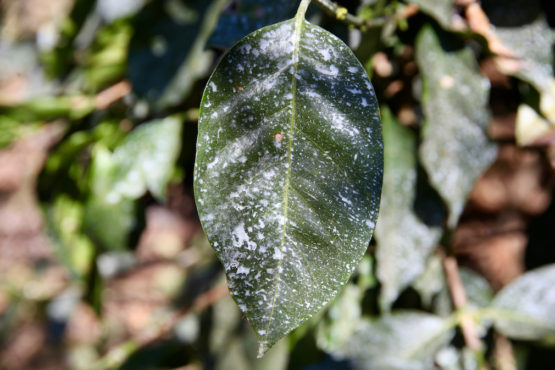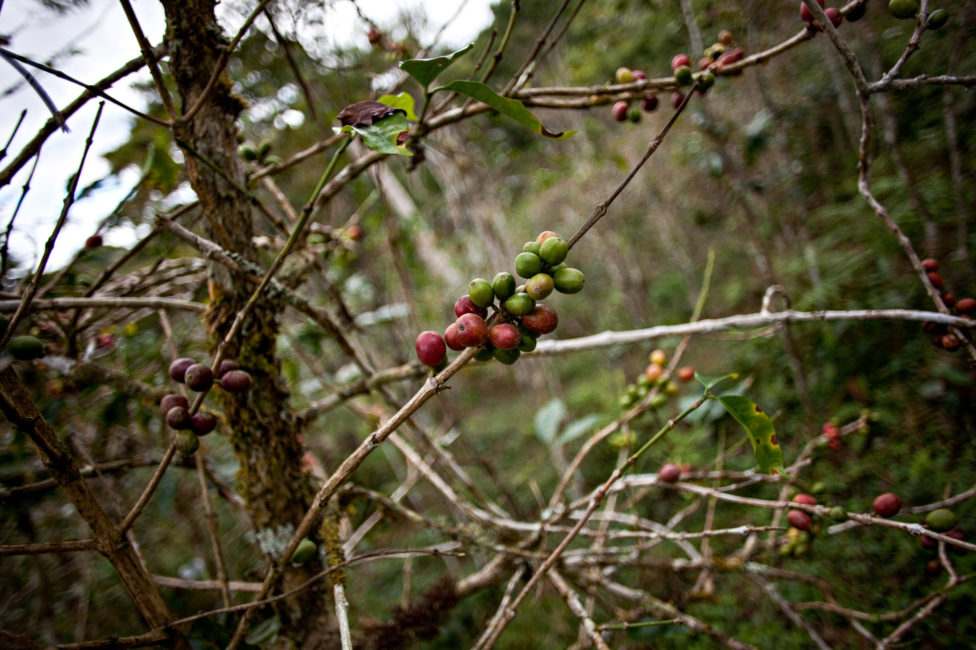An Unconventional Way to Deal with Leaf Rust
Victor Calderon is not your typical producer. Whilst he comes from long lineage of coffee producers (his family have produced coffee for over 100 years), his approach to coffee farming is innovative, experimental and often non-traditional. He refuses to accept conventional wisdom or accepted practices in farming and his inquisitive and experimental approach had led him to discover a much more sustainable and unique way to control leaf rust.
Victor’s farm, El Tambor, had been the site of an exploratory mine when he took it over in 2001. The mining company had found nothing, but their exploratory works, at various sites across the 700 hectares of land, uncovered a lot of white clay with a high benzonite content. It was the fortunate combination of the presence of this clay, and Victor’s inquisitive nature that led him to discover that this would be the perfect natural remedy to combat leaf rust.
Victor explained how his discovery came about when we visited him earlier this year. “When leaf rust started to hit Guatemala, I was worried, and started to read as much as I could,” he explained, “I did not want to use the chemical fungicides, and wanted to find an alternative”. From his reading Victor learnt that fungi like leaf rust thrive in acidic environments, and so he started to trial different alkaline solutions on the plants – everything from lemonade to orange juice – looking for one that worked. “These solutions did not work. I nearly gave up… but then I started to think about the clay on the farm,” he explained. “At first I observed that all of the trees along the roads through the farm were thriving. They were covered in clay, due to the fact that we would splash them as we drove through puddles after the rain”. Based on this observation, Victor suspected that this clay may provide just the solution that he was looking for.
After much experimentation, Victor developed a unique recipe that has enabled him to fight off coffee leaf rust with minimal environmental impact. A solution of water and clay from the old mines is mixed together with a tiny bit of copper-based fungicide and then applied to the underside of leaves using a normal sprayer. Originally, he had applied the solution on the tops of the leaves, but he quickly realised that the plants respire from under their leaves (and that is also where the fungus takes hold) and so he requested that workers apply the solution under the leaf. Suddenly, and quite remarkably, he observed that within three days the fungus had died on every plant to which the solution had been applied. He attributes this not just to the alkaline solution but also to the endothermic properties of the clay, which helps regulate temperatures and helps the plants fight off future infections.
There are five reasons his solution works, he explained during our visit.
- The clay solution is alkaline, thus helping to create a higher PH level (rust/fungi thrives in a more acidic environment).
- The clay has higher electronegativity, and this enhances the work of the copper that is put into the solution.
- The clay is also highly absorbant. Victor’s theory is that it acts to ‘absorb the leaf rust’ – in the same way that it dries out your skin when you put it on your face (he made us all cover our faces in clay for effect!). It also reduces excess moisture on the plant (fungi thrives in a moist environment).
- It is also easy to apply—and it sticks to the leaf when sprayed on and then dries on there. Other solutions he tried would simply drip off.
- When sprayed, the leaves’ ability to intake light is reduced. The fungi also has less access to light, and this reduces its ability to grow and multiply.
Victor strongly believes that in addition to any treatment for the leaf rust, you also need to make sure the coffee plantation is as healthy as possible. “The rust will not simply go away. It is like a cancer. If you make the conditions good, then it won’t thrive.” These days he finds he still needs to apply the leaf rust solution, but less frequently—around once a month. However, although trees continue to lose some leaves, new growth comes back stronger than ever, and cherry development is unhindered. In conjunction with the treatment, Victor is continuing to renovate Tambor’s plantation (replacing up to a 6th of the farm annually), but he has been saving the seeds of the strongest trees, hoping to “teach the next generation of plants to resist rust”.
El Tambor means ‘The Drum’ in Spanish: it is assumed that the name comes from the sounds of a river pounding under the ground, making a drum-like sound. Even though the sound can no longer be heard today, Victor carries on marching to the beat of his own drum, innovating and refusing to follow the well-trodden path simply because of accepted agricultural practices. We think we all have a lot to learn from his approach, and feel very lucky to work with him!



